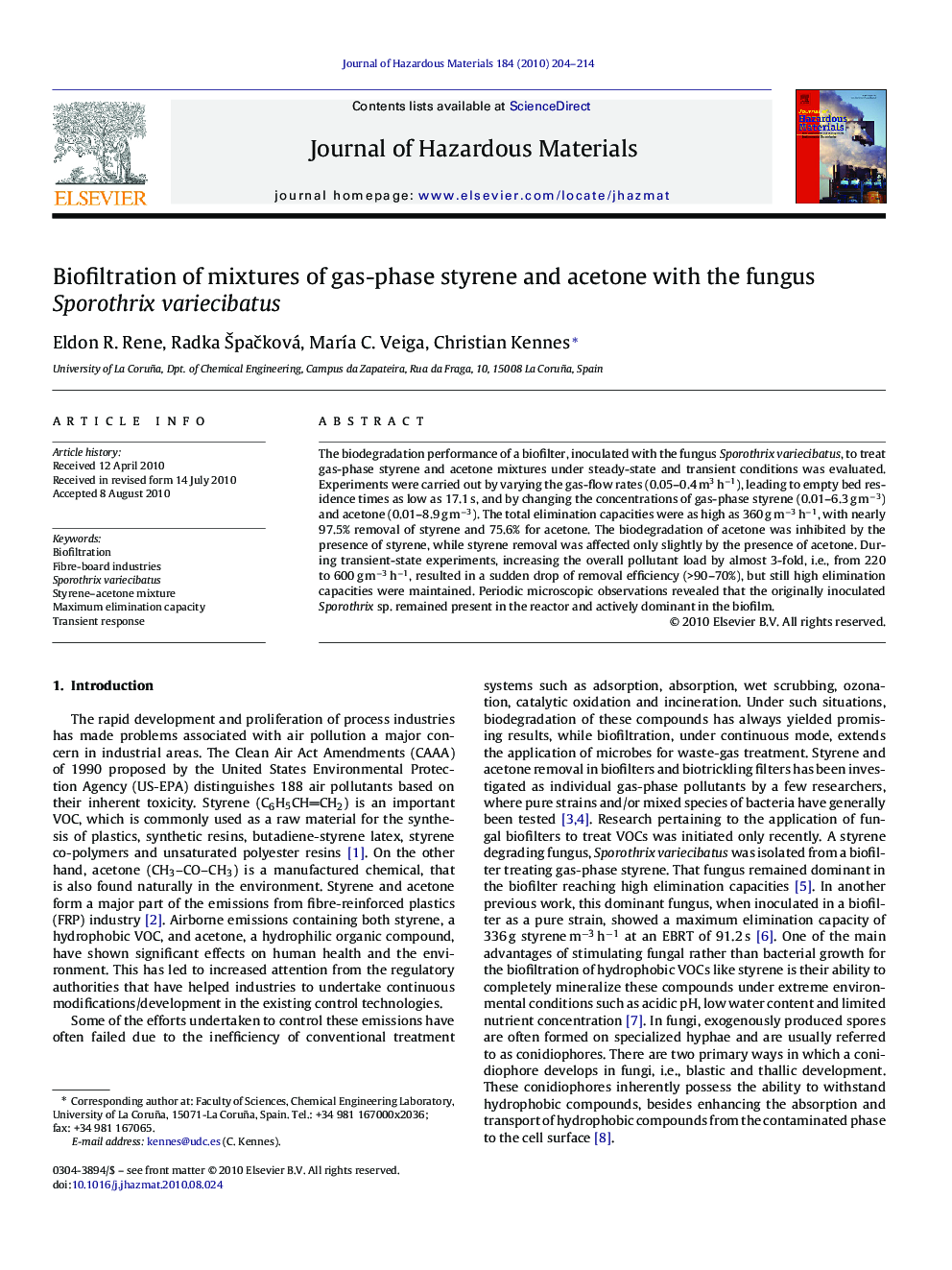| Article ID | Journal | Published Year | Pages | File Type |
|---|---|---|---|---|
| 580154 | Journal of Hazardous Materials | 2010 | 11 Pages |
Abstract
The biodegradation performance of a biofilter, inoculated with the fungus Sporothrix variecibatus, to treat gas-phase styrene and acetone mixtures under steady-state and transient conditions was evaluated. Experiments were carried out by varying the gas-flow rates (0.05-0.4 m3 hâ1), leading to empty bed residence times as low as 17.1 s, and by changing the concentrations of gas-phase styrene (0.01-6.3 g mâ3) and acetone (0.01-8.9 g mâ3). The total elimination capacities were as high as 360 g mâ3 hâ1, with nearly 97.5% removal of styrene and 75.6% for acetone. The biodegradation of acetone was inhibited by the presence of styrene, while styrene removal was affected only slightly by the presence of acetone. During transient-state experiments, increasing the overall pollutant load by almost 3-fold, i.e., from 220 to 600 g mâ3 hâ1, resulted in a sudden drop of removal efficiency (>90-70%), but still high elimination capacities were maintained. Periodic microscopic observations revealed that the originally inoculated Sporothrix sp. remained present in the reactor and actively dominant in the biofilm.
Keywords
Related Topics
Physical Sciences and Engineering
Chemical Engineering
Chemical Health and Safety
Authors
Eldon R. Rene, Radka Å paÄková, MarÃa C. Veiga, Christian Kennes,
